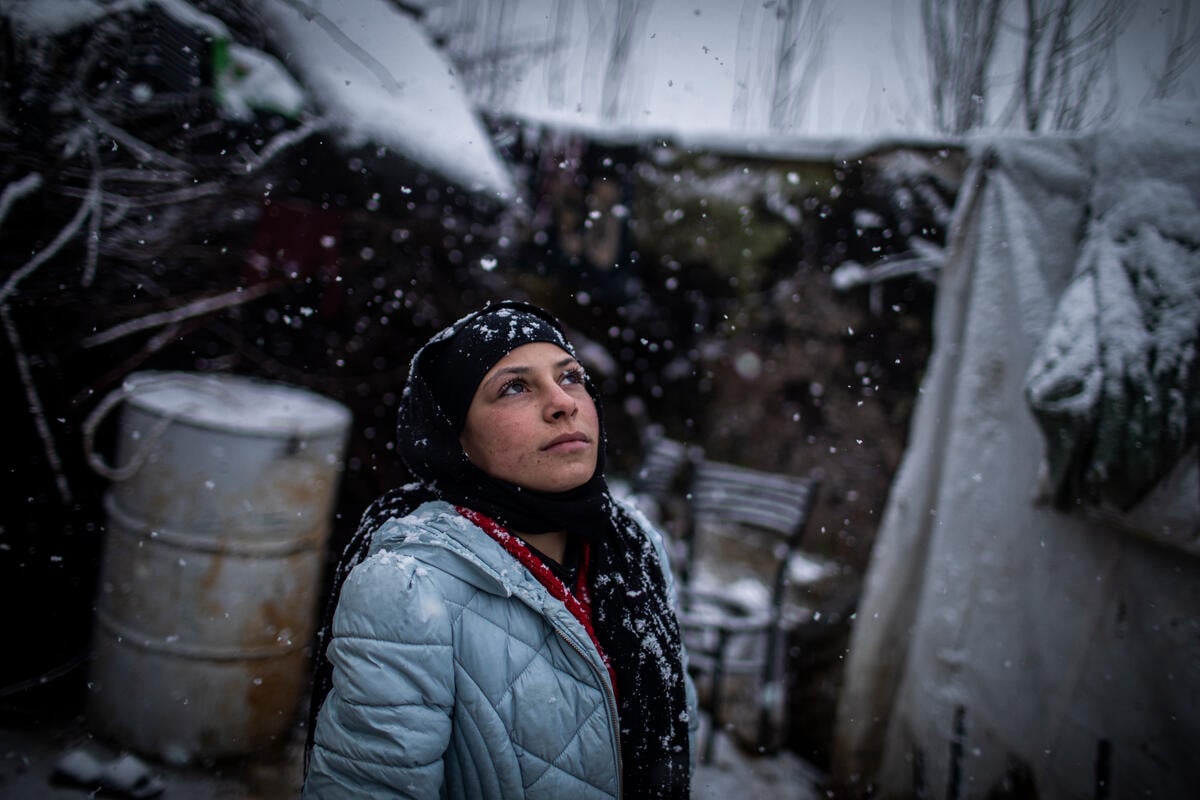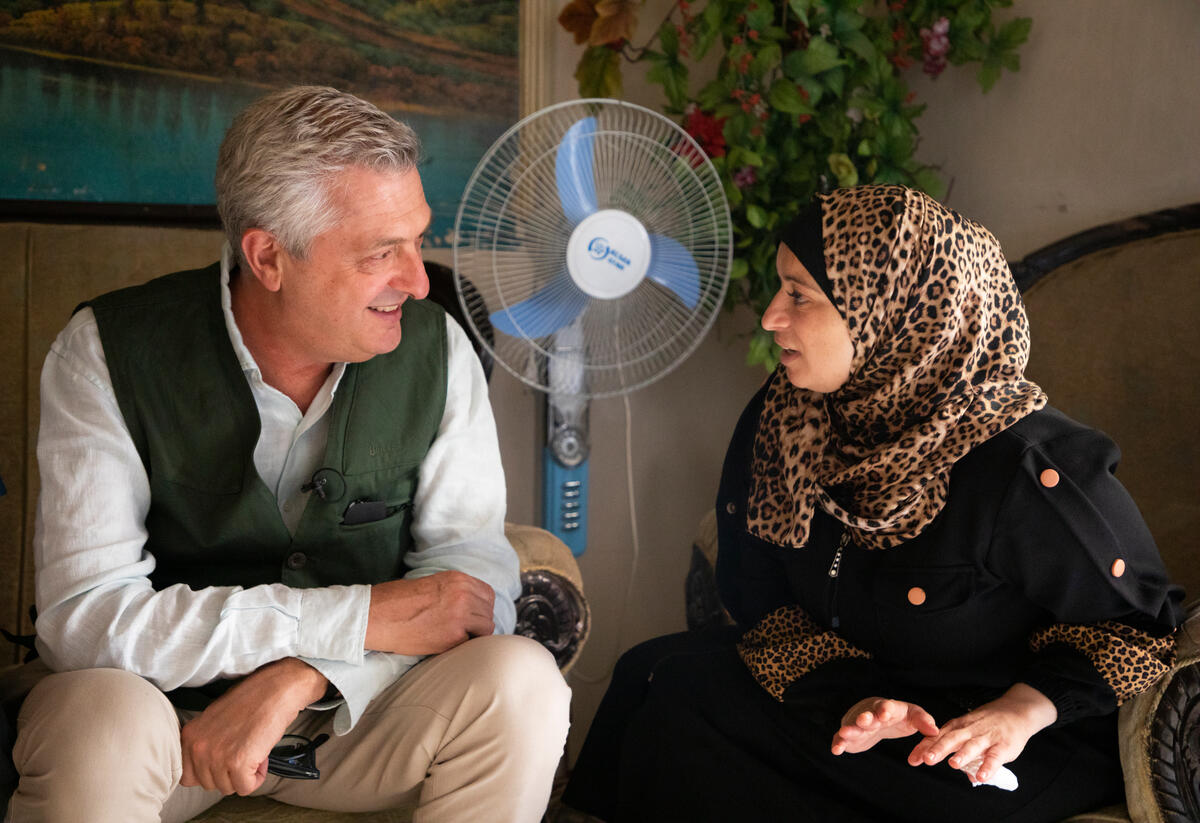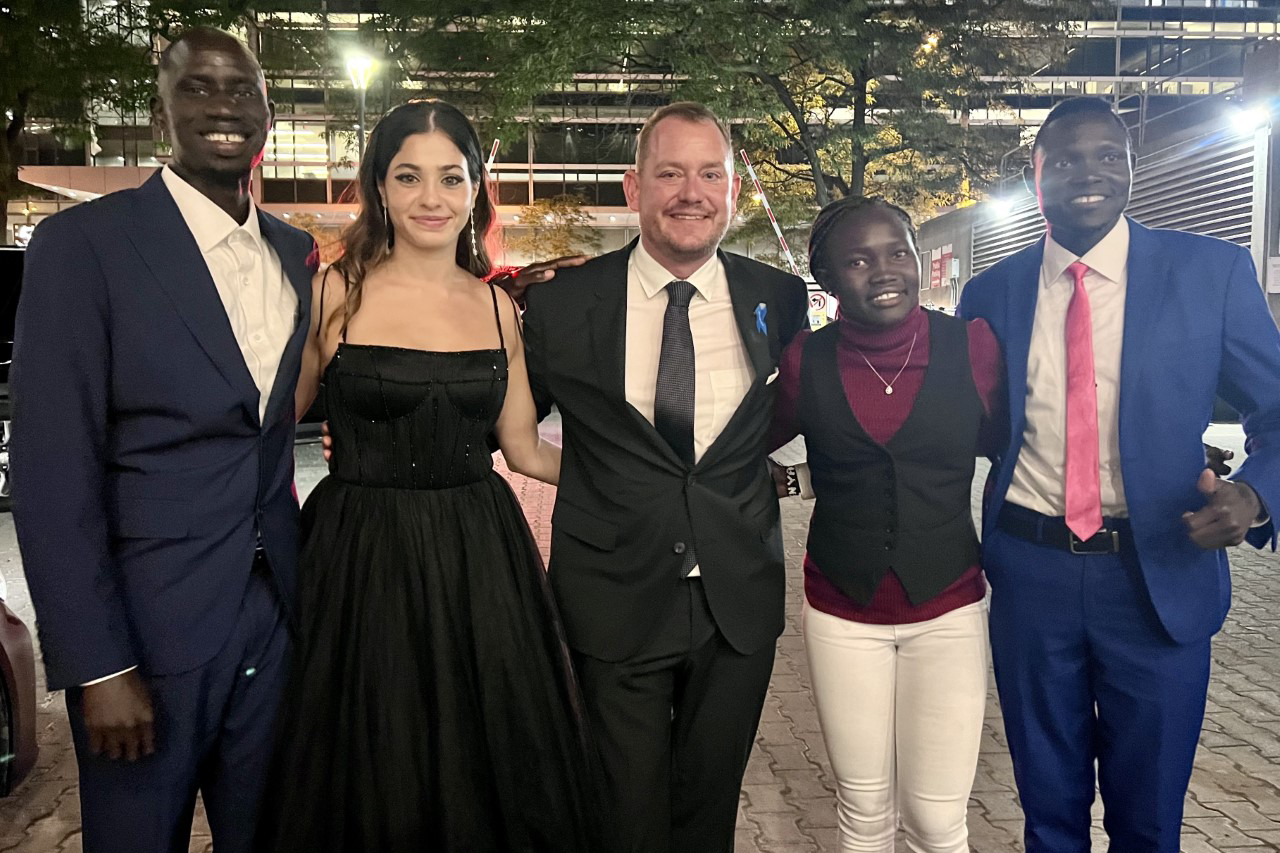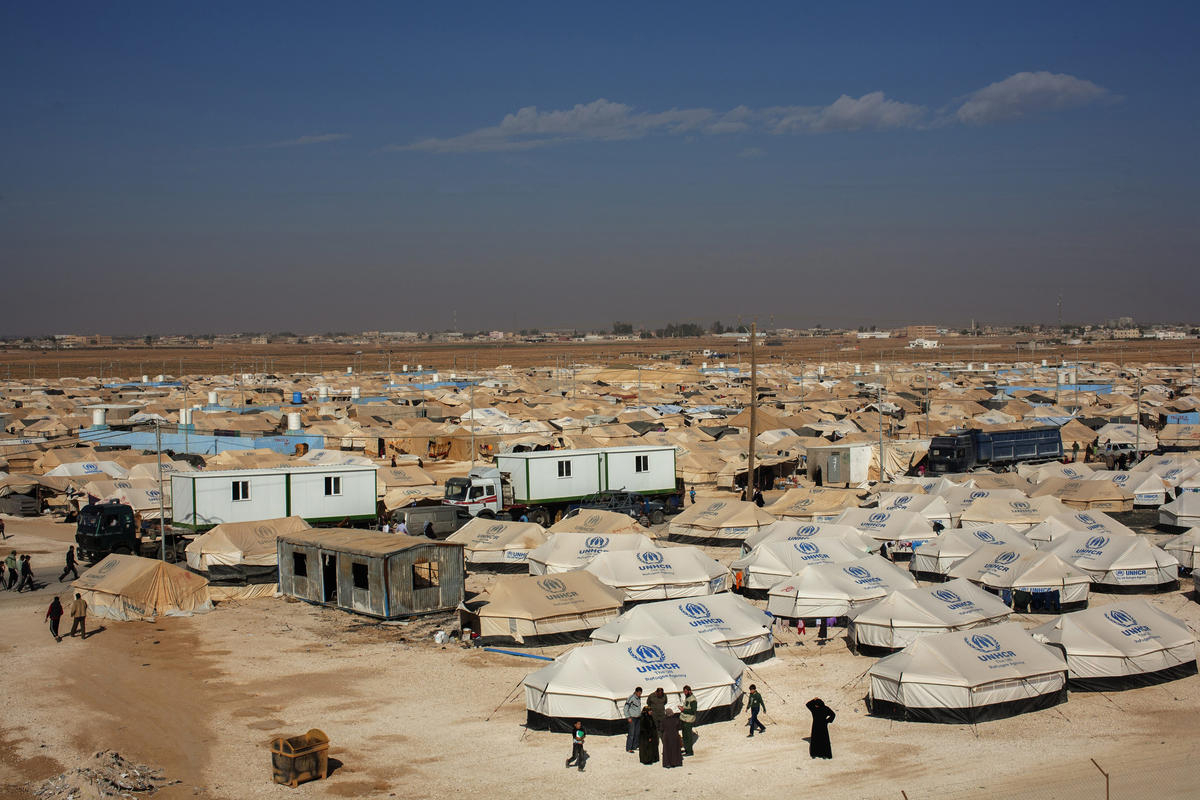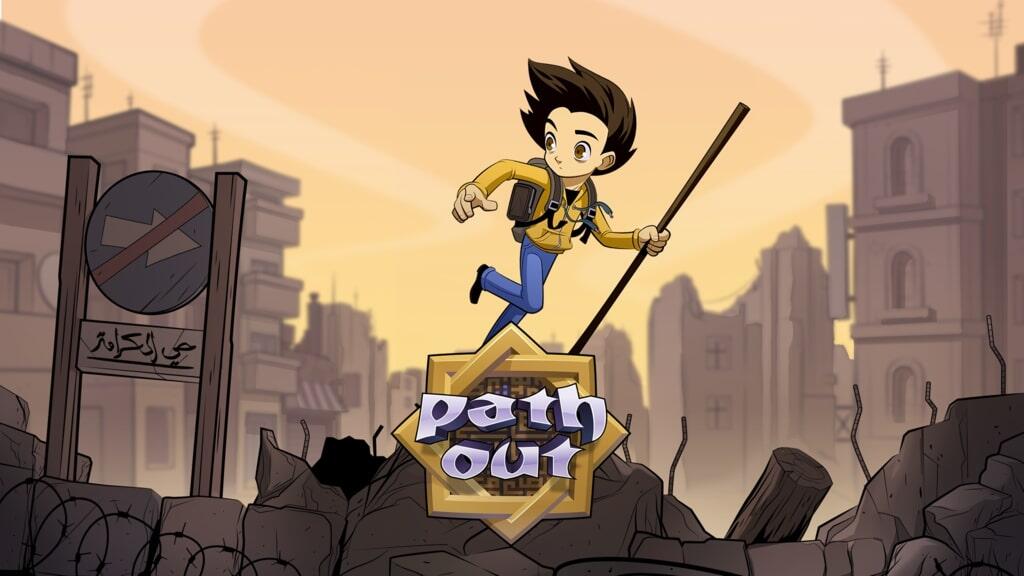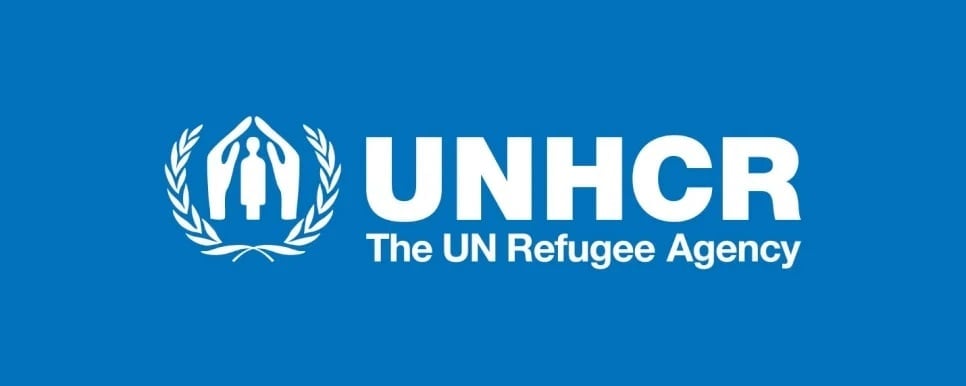IKEA campaign offers brighter future for Syrian refugees
IKEA campaign offers brighter future for Syrian refugees
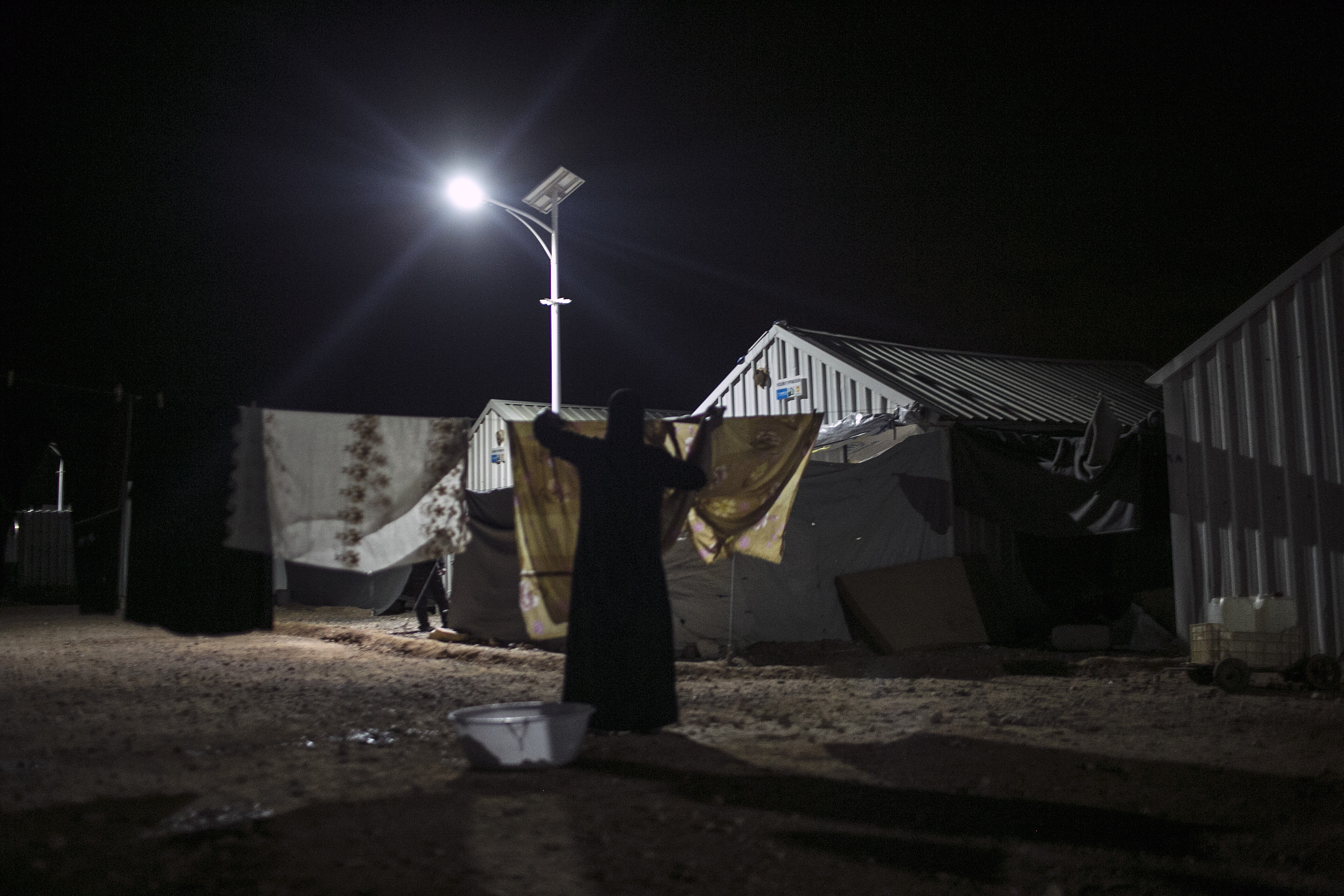
AZRAQ REFUGEE CAMP, Jordan, Nov 30 (UNHCR) - A planned solar farm is set to transform the lives of thousands of displaced Syrians living in Jordan's barren northern desert, thanks to donations from IKEA's Brighter Lives for Refugees campaign.
The campaign was launched in 2014, and in its first two phases has already raised 18.5 million euros for refugees in parts of Africa, Asia and the Middle East. In its third phase, for every LED lighting product sold in IKEA stores and online between November 29 and December 19, the IKEA Foundation will donate one euro to help UNHCR provide refugees around the world with renewable energy and lighting.
In Jordan's remote Azraq refugee camp, proceeds from the campaign will fund the construction of a solar farm that will meet the energy needs of 27,000 Syrian refugees currently living there after fleeing the conflict in their homeland.
Since Azraq first opened in April last year, residents have consistently cited the lack of electricity as one the biggest challenges they face in their daily lives. The absence of power and adequate lighting mean that everyday activities such as collecting water or going to the toilet can become fraught with danger after dark, especially for women and girls.
Mayada, aged 40, came to the camp ten months ago with her husband and three children. Having lived a comfortable life before the conflict in a large house in the Ghouta suburb of Damascus, she said she never imagined having to live without something as basic as electricity.
"Nowadays electricity is life, and without it even the most simple things become a struggle," Mayada told visitors from UNHCR. The family lives in a part of the camp with no street lighting, and at night her 12-year-old daughter Riham is too scared to go alone to the communal toilet at the end of the row of shelters where they live, so she regularly has to wake her parents up to accompany her.
During winter it becomes harder to charge the solar powered lanterns that residents rely on to light their shelters by night, plunging homes into darkness and putting an abrupt end to family life when they run out. "You can't visit friends, the kids can't do their homework. By 9 or 10 o'clock most of the camp is in bed," Mayada said.
With construction work on the solar farm set to begin within weeks, the aim is to connect shelters to the new electricity grid by March or April next year. As well as transforming life in the camp, the project will bring additional benefits to some of the refugees as well as their Jordanian hosts.
As part of the project, 20 refugees from the camp will be trained to operate and maintain the solar farm, providing them with employment and new skills. In addition, the initial 2 megawatt plant will produce US$1.4 million worth of electricity per year, with any excess unused by the camp being fed into the Jordanian national electricity grid free of charge. When the camp closes, the farm itself will be donated to the Jordanian government.
"People tell us it will make a huge difference to them just to be able to switch a light on again, making them feel more at home," said UNHCR Energy Adviser Paul Quigley, who is helping to manage the project.
"Without the funding provided by the Brighter Lives for Refugees campaign, we wouldn't have been able to put in place such a sustainable, long-term energy solution. With dramatically reduced electricity costs, it will also mean that money we would have spent on providing power to the camp can be used for humanitarian projects," he added.
Mayada says that when electricity finally comes to the camp she will no longer have to put on a brave face for the sake of her kids. Asked what she would say to IKEA customers who contribute to the campaign effort, she uses an old Syrian expression of affection. "I wish I could give them all a big kiss between their eyes! It will mean everything to us."
By Charlie Dunmore in Azraq Refugee Camp, Jordan



